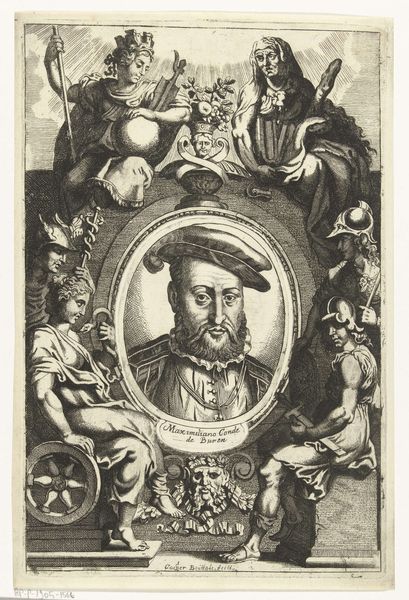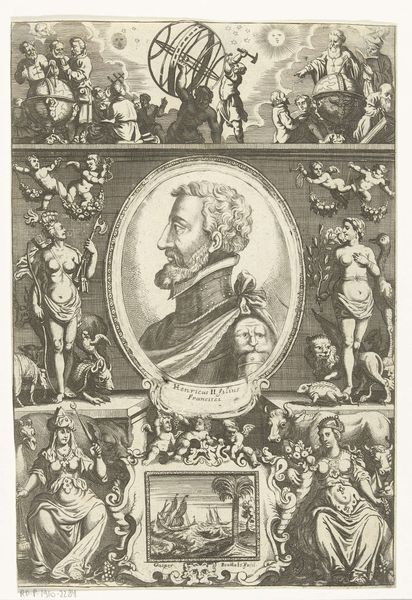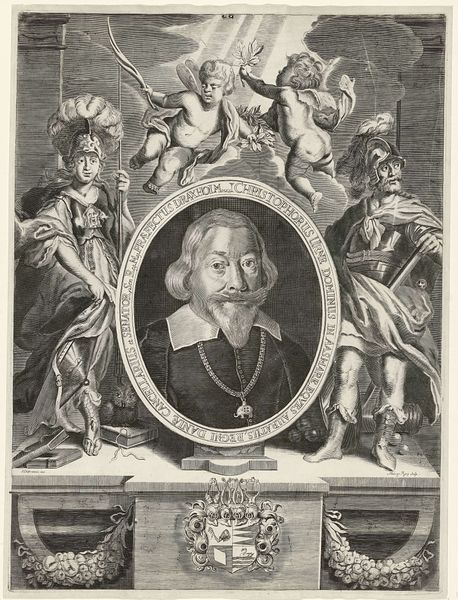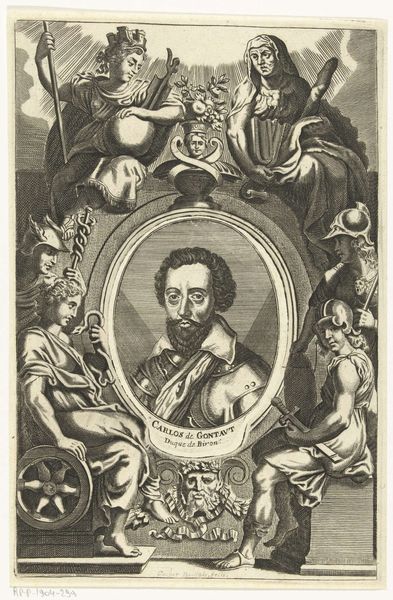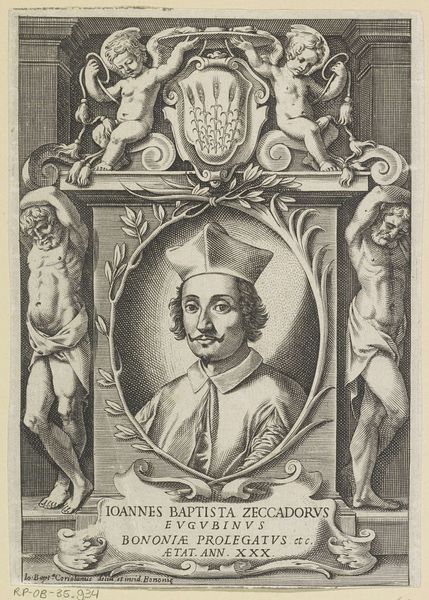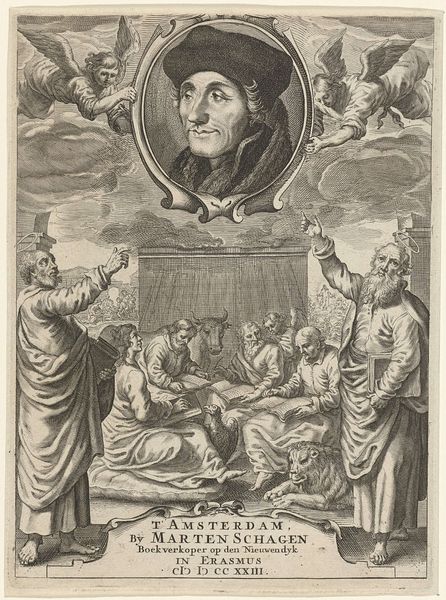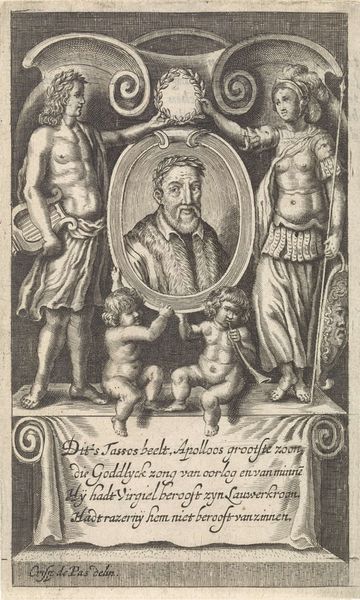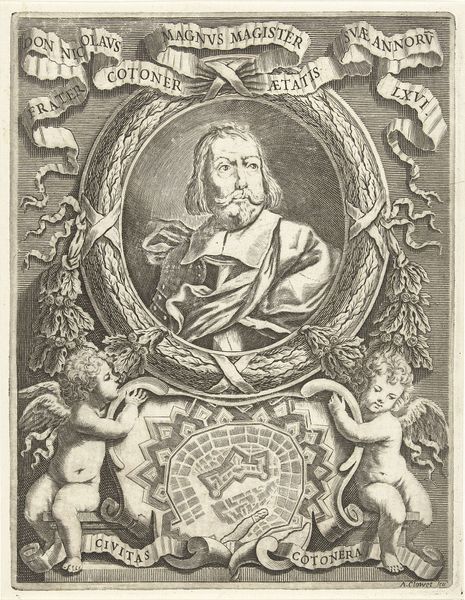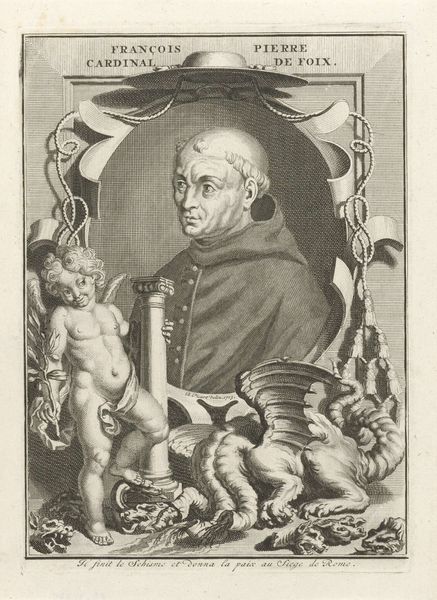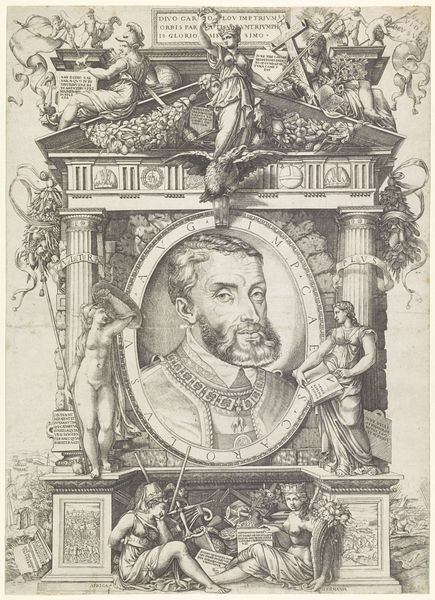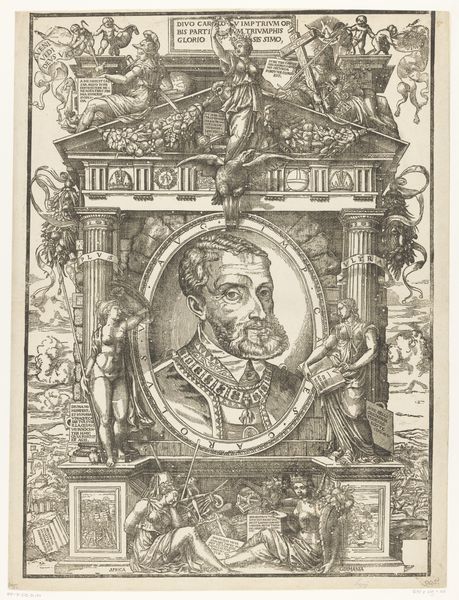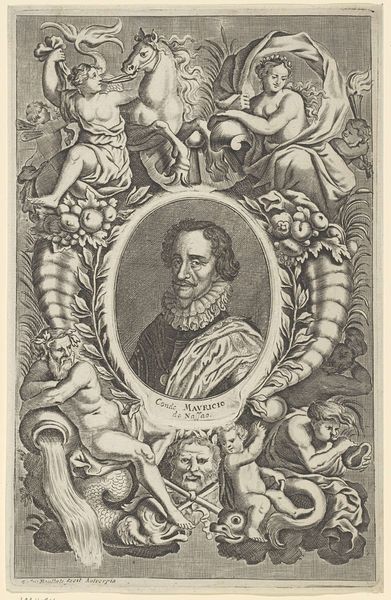
print, engraving
#
portrait
#
baroque
# print
#
old engraving style
#
history-painting
#
academic-art
#
engraving
Dimensions: height 516 mm, width 386 mm
Copyright: Rijks Museum: Open Domain
Curator: This is an engraving of Władysław IV Vasa, King of Poland, dating from between 1632 and 1665. It's attributed to Salomon Savery and currently resides in the Rijksmuseum's collection. Editor: It’s imposing, even severe. The density of the details almost overwhelms the subject himself, that oval portrait of the King nearly disappears amidst the putti, weaponry, and battle scenes packed in. Curator: Indeed, the engraving presents a meticulously crafted image of royal authority and military strength. Observe the Baroque flourishes and academic approach that highlight the political landscape of the era, with details meant to legitimize Władysław's reign. Editor: Look how idealized and detached it feels! We’re so far removed from any sense of the actual human being, Władysław. The artist is promoting power by associating him with symbols of conquest and divine right rather than representing anything unique or human. Who does this really serve? Curator: It's crucial to remember the societal context. Royal portraits served a vital function in image building and disseminating propaganda. Savery has strategically employed those historical tropes for this purpose. Editor: What do you mean by “strategic”? To me, this feels more like a checklist than actual artistry – tick off the cherubs, the conquered enemies, the impressive titles and honorifics... All of it perpetuates this system. Look at the depiction of war at the base: a clean, detached parade of power totally disconnected from reality. Curator: One could certainly argue that this reflects the academic art of the period, rooted in history-painting and portraying grandeur while idealizing conflict. What could this imagery project onto viewers back then? What kind of emotional and intellectual state might it create? Editor: I wonder if the common folk of the time saw right through the charade? I wonder about the power of dissent, how counter-narratives took hold when the "official" one became suffocating. Who challenged it and how? And were images created to subvert portraits like these? That would be something. Curator: An important avenue to explore and discuss to reframe the conversation. By looking into hidden and lost stories and expressions from this era, can help uncover fresh and insightful analysis around art’s social role back then and also now. Editor: Exactly. Works like this make us want to seek those kinds of stories to better comprehend this era’s complexities around power, resistance and representation.
Comments
No comments
Be the first to comment and join the conversation on the ultimate creative platform.
